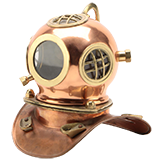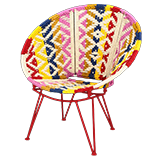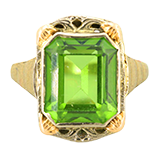Clement Greenberg; Untitled, 1978
Item Details
Clement Greenberg (American, 1909-1994)
Untitled
oil based acrylic on paper
inscribed to the lower right; Greenberg/ 78
housed in silver toned frame
Provenance
Ex Collection of critic and curator Kenworth Moffett (1934-2016) and Lucy Baker (b.1955)
Descended in the family to the current owner
Literature
Illustrated in Clement Greenberg: A Life, Florence Rubenfeld, 2004.
An oil based acrylic painting on paper of an abstract composition by celebrated art critic Clement Greenberg (1909-1994), created in 1978. Dynamic brush strokes of black acrylic paint shoot upwards from the bottom of the paper. The bold strokes taper towards the middle of the work where color fields of light blue and red mix in with curved lines of fading black. The painting is signed and dated to the lower right in ink. Presented behind acrylic glass in a silver tone frame.
This example was likely given to Kenworth Moffett, whom Greenberg had a close personal relationship with and mentored. Moffett’s own critical theory often paralleled that of Greenberg’s, and it was well known that the two associated with one another- they even participated in many of the same workshops including the Triangle Arts Association years later, in 1982. It is exceedingly rare that Greenberg’s (who primarily worked as a writer/critic) work surfaces on the market.
Clement Greenberg was regarded as one of the great critics of the 20th century, possibly the most profound critical voice of the American Modern art movement. In his online Artletter, Ken Moffett said of Greenberg, ‘Like any great critic, Clem had the empathy and imagination to let his taste be shaped by the greatest artists of his time, and the art world still has not caught up with him.’ This work is one of the only known extant examples of Greenberg’s attempt at an abstract composition that we can locate. An example of his work and signature can be found in a charcoal drawing of his from 1969, where he depicts a reclining nude.
Clement Greenberg was born January 16, 1909, in New York City. As a young boy, he was constantly sketching and drawing. He graduated cum laude from Syracuse University in 1930 with a Bachelor of Arts degree in English Literature. During a business trip to California in 1934, he met and soon married a librarian with whom he had his son, Danny. After just a few years together, the two divorced and Greenburg moved back to New York City where he would stay for the extent of his career and life. He first worked for the Partisan Review in Greenwich Village, where he would publish one of his first widely recognized essays, ‘Avant-Garde and Kitsch.’ The essay analyzed the relationship between popular culture and modern art, although Greenberg eventually came to reject most of the essay.
After World War II, Greenberg moved to the epicenter of modern art in New York, Greenwich Village, and worked as an associate editor for Commentary Magazine and as an art critic for the magazine The Nation. As his post-war views shifted from Socialist supporter to devout anti-Communist, Greenberg abandoned The Nation and joined the CIA-sponsored American Committee for Cultural Freedom. It was during the early half of the 1950s that he returned to critical art writing. At the time, Greenberg also had a romantic relationship with American painter Helen Frankenthaler (1928-2011).
In 1955, Greenberg published his essay, ‘’American-Type’ Painting,’ in the Partisan Review which would stand as one his most influential essays on Abstract Expressionism. This was by no means his first attempt at writing on modern art, but certainly one of his most profound. Greenberg writes in this essay, ‘When they started out, the ’abstract expressionists’ had had the traditional diffidence of American artists. They were very much aware of the provincial fate lurking all around them. This country had not yet made a single contribution to the mainstream of painting or sculpture. What united the ‘abstract expressionists’ more than anything else was their resolve to break out of this situation.’
Greenberg was very influential in the unification of the Color Field painters. In 1948 Greenberg listed an advertisement for a summer roommate in New York, Friedel Dzubas answered. Later he would become affiliated with Color Field paintings alongside Jack Bush under the tutelage of Greenberg. While teaching at Black Mountain College he developed a relationship with Kenneth Noland who he included in his 1954 exhibition Emerging Talent held at the Kootz Gallery in New York. Greenberg coined the term “Post-Painterly Abstraction” to describe Noland’s work when he organized an exhibition by the same name in 1964 at the Los Angeles County Museum of Art; the exhibition featured 31 artists including Noland, Friedel Dzubas (1915-1994), Jules Olitski (1922-2007), Morris Louis, and Helen Frankenthaler, among others. Greenberg became acquainted with Canadian Color Field artists William Perehudoff and Dorothy Knowles through exhibitions and the Emma Lake Workshops in Saskatchewan. Greenberg was an important promoter and critic of all of these artists as well as Anthony Caro who he compared to J.M.W. Turner. The writings of Greenberg had a profound affect on the movement of Color Field painting as well as the careers of the artists involved in it.
Dimensions
- measures in the frame; visible image size: 18.50" W x 23.75" H.
Item #
17DET014-003

































